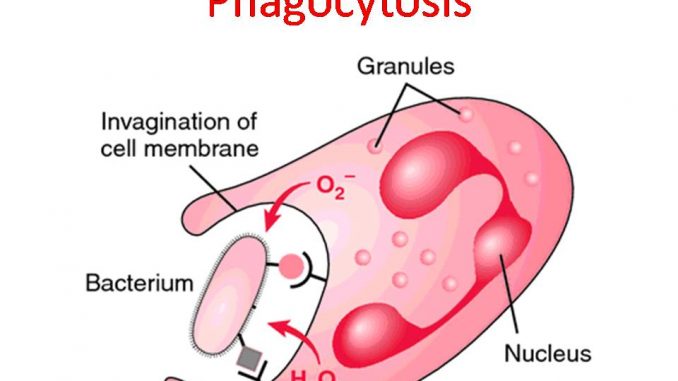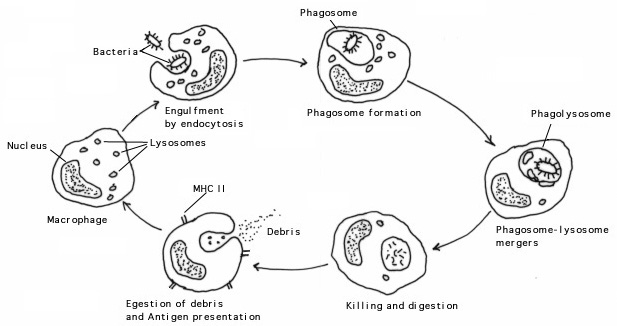
Phagocytosis or Phagocytic barrier of immune system
- Phagocytosis is an important defense mechanism of host to provide immunity. Most of the bacteria that enter into host are killed by phagocytic cells such as Neutrophils, monocytes and macrophages.
- Phagocytosis is an example of endocytosis.
- There are two types of endocytosis; phagocytosis and pinocytosis.
Steps in phagocytosis:

- At first phagocyte approaches to the site of infection
- Phagocyte extends pseudopodia around bacterial cell.
- Pseudopodia gradually increase in size and finally fused so that bacteria is engulfed in the form of phagosome or food vacuole.
- The phagosome and lysosome come nearer to each other and fuse to form phago-lysosome.
- Inside phago-lysosome ingested bacteria is killed by hydrolytic and digestive enzyme of lysosome.
- Required materials released from digested bacteria are absorbed into surrounding cytoplasm and undigested residues are excreted out by exocytosis.
Killing Mechanism of phagocytosis:
Killing of ingested bacteria during phagocytosis occur by two different mechanism
- Oxygen dependent mechanism
- Oxygen independent mechanism
1. Oxygen dependent mechanism:
- During phagocytosis, phagocytic cell increases uptake of O2. At the same time rateof pentose phosphate pathway increases to generate more NADPH.
- NADPH reduces molecular O2 to produce various toxic metabolic products such as Hydroxyl free radical, H2O2 and superoxide ions that kill ingested bacteria.
- This process is also known as respiratory burst.
- It is the major mechanism of killing of ingested bacteria during phagocytosis.
2. Oxygen independent mechanism:
- In this mechanism, ingested bacteria are killed by hydrolytic and digestive enzymes of lysozyme.
